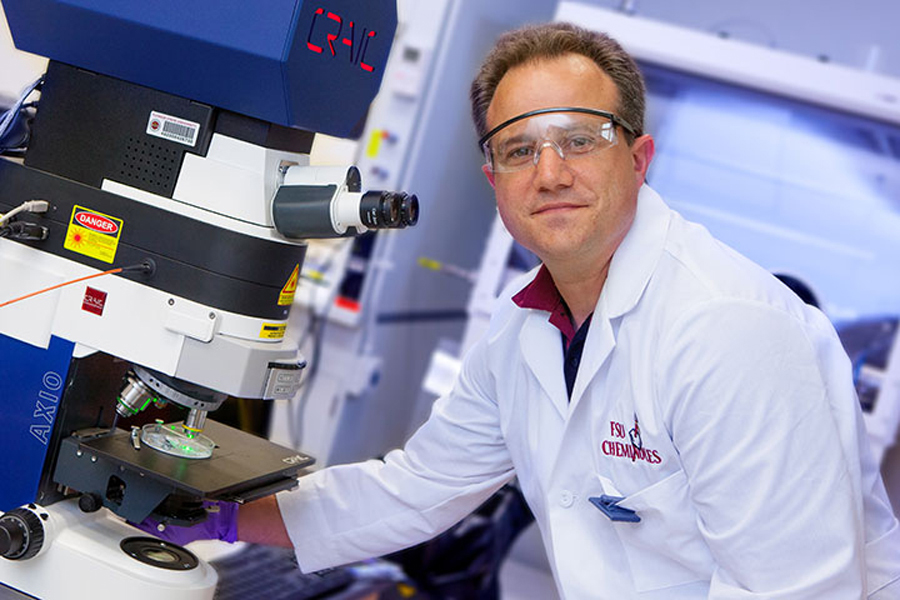A bonding experience: Study reveals potential new family of compounds

On the Periodic Table of Elements, there are elements that most people remember from school — oxygen, hydrogen, gold and silver. But there are also the ones that you might not immediately recognize, such as berkelium and einsteinium. These exotic elements are typically only used in specialized laboratories to understand how chemistry and physics change at the extremes of the table.
Those heavy elements, particularly radioactive ones, are exceptionally difficult to modify and control for specific purposes. But a Florida State University research team has found that they could design a ligand —a functional group of molecules used to build complex compounds — out of molecules typically used in solar cell technologies and create a completely unexpected effect when bonding them with a radioactive element. When they paired that ligand with the element berkelium, it caused a significant shift in the electron density of the compound.
“You normally wouldn’t think about bonding them to radioactive elements, but the idea was to polarize the electrons around berkelium to gain systematic control of bonding,” said Thomas Albrecht-Schoenzart, the Gregory R. Choppin Professor of Chemistry at Florida State University. “But it had this bigger effect in that it enhanced the bonding ability of anything that was directly across from this highly polarized binding agent, and it pulled the electron density from one side of the molecule to the other.”
The study was published today in Nature Communications.
In addition to berkelium, Albrecht-Schoenzart and his team tested the process on cerium, a silvery white metal that tarnishes when exposed to air and has some properties that are similar to berkelium. The effect was stronger in berkelium than cerium, but still significant.
“This gave us proof of concept, and we know now that we don’t have to reinvent the wheel and can systematically test this process out on other metals and with even more polarized ligands,” he said.
This enhanced ability to bond is of particular interest to scientists because it could have applications in separating — and thus recycling — used nuclear material. They believe that this work could lead to a diverse family of useful compounds.
“The special property of these ligands is that the amount of polarization can be easily calculated and experimentally verified,” Albrecht-Schoenzart said. “Thus, we have a property that can be fine-tuned to achieve a specific bond strength that might allow for the targeting of a specific metal. For example, one might want to target americium and not curium during used nuclear fuel recycling.”
This research was funded by the Department of Energy.
Researchers from Florida State University, the FSU-headquartered National High Magnetic Field Laboratory, the Lawrence Berkeley National Laboratory, the University of Rochester and the Universidad Andres Bello in Chile contributed to this work.

